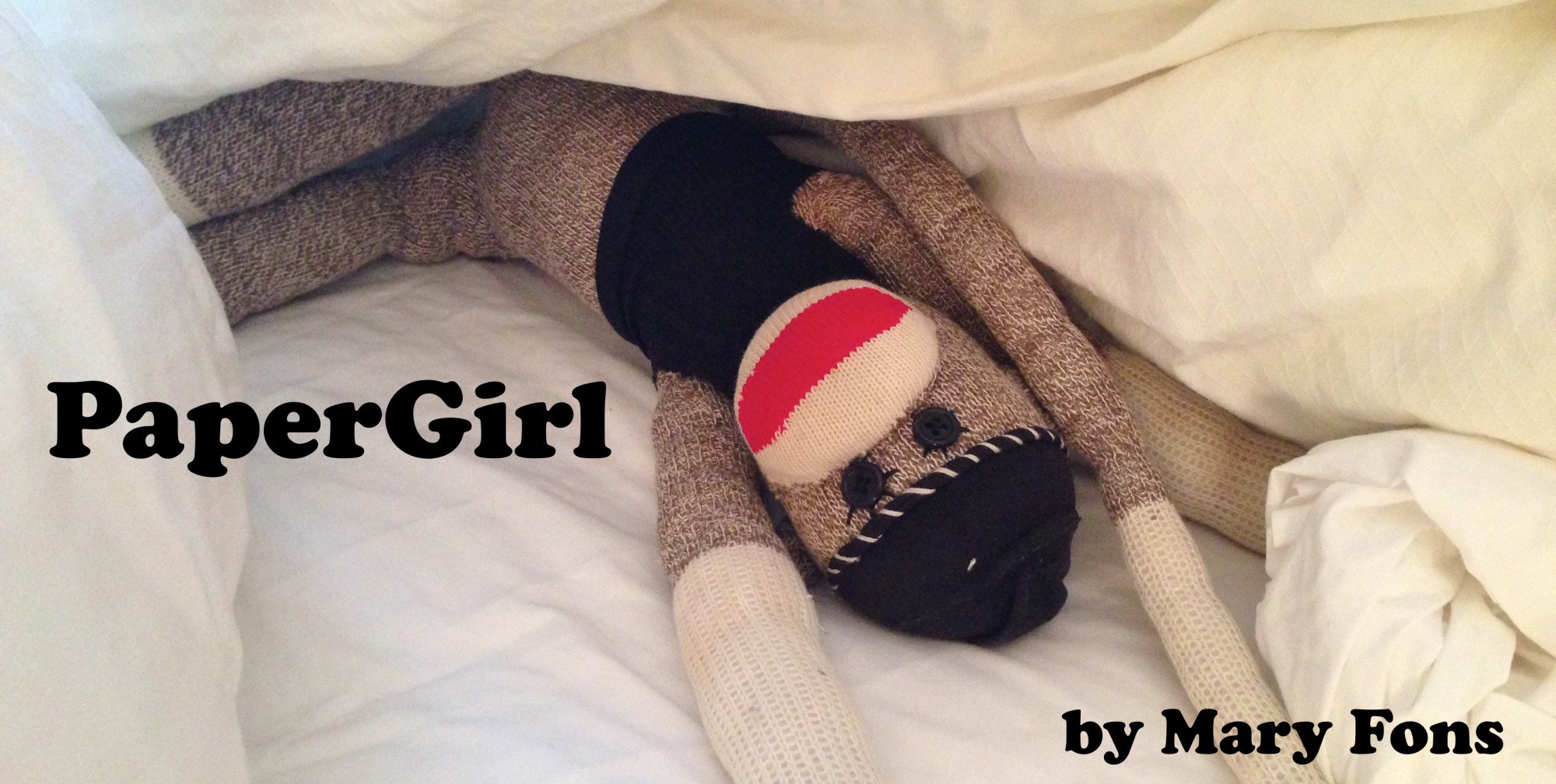

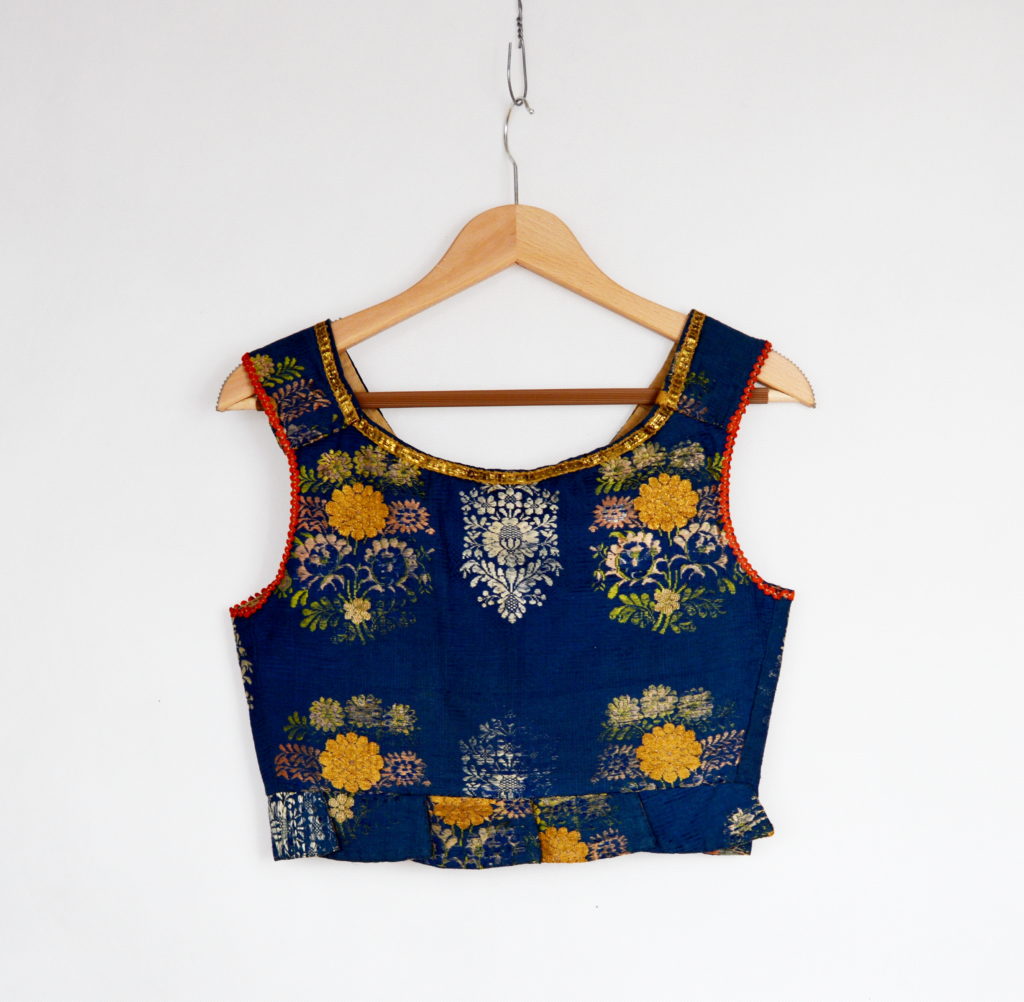
“Glamour cannot exist without personal social envy being a common and widespread emotion.” — John Berger, 1972
I have nothing to wear.
Last winter, when my life fell into a blast furnace, there were eight items of clothing I could put on my body from day to day that didn’t make me want to crawl out of my skin. Those items were:
Levi’s jeans
L.L. Bean wool sweater (red)
L.L. Bean wool sweater (black w/pattern)
Brown leather hiking boots with red laces
Nike Cortez tennis shoes
Double-breasted wool topcoat (camel)
Wool scarf (gray)
Knit cap (navy)
Anything else, and I was wearing a costume. This was a dissociative experience, and I was grappling with enough of those, thank you very much. Why couldn’t I wear any of my other sweaters? Or my white Oxford shirts? An Oxford shirt is about as neutral as an item of clothing can get, but when I put one on and buttoned it up, I felt like an idiot.
Strangest of all was that I couldn’t wear what has been my winter uniform for years: black pants and a black turtleneck. You’d think when a woman is experiencing major depression, black is the only thing that will do. Jeez, aren’t the depressed issued a black turtleneck and black pants at the door? But to me, black clothing does not communicate sorrow or a lack of vitality. To me, black clothes, aside from being chic (and slimming!) communicate a person in command of herself, someone who wants to be taken seriously.
What was happening to me was serious but I felt in command of nothing, and chic? Chic was a planet other people lived on. Whose clothes are these, I wondered, as I moved hangers back and forth in my closet. At some point I stopped opening my closet at all, ceased to wonder or worry about it and I simply put on the same thing day after day. I laundered my clothes often because I wore them daily. Processing laundry took great effort but it was a simple enough task and the smell of Woolite never lost its charm. I’m still grateful for that.
How I dreaded the coming warm weather. I’d be screwed. Dressing for spring and summer is awful for me every year, regardless of mental state; precious few of us on Team Black Turtleneck cross the line over to Team Tank Top, even if the Tank Toppers seem more comfortable than we are come Memorial Day. This year, I feared would be way worse.
The season changed. And by the time my hiking boots were inappropriate — early May, I think — my disposition had improved considerably. But I had not been wrong to worry about the clothes and in fact the situation was worse than I had anticipated. Not only had I not caught a ride on a rocket ship back to Planet Chic, I did not want to go. It was time to bring out my low-heeled suede pumps and my Marni blouse and my side-zip, slim-fit black Vince trousers, but when I went to get dressed in all that, you would’ve thought there was a tin of rotting tuna fish in my closet. I’d wince and shut the door and then just stand there with my head on the closet door, trying to envision any assemblage of apparel that would not make me feel like I was wearing a dead woman’s clothes. It was that bad.
Not everyone cares as much about clothes as I do, and there are those who care far more. My reasons for caring about what I wear (if you’ll allow me to psychoanalyze myself for a moment) are not hard to figure out. I want to control the narrative. Well-designed things make life easier and less ugly. Beautiful clothes make me feel beautiful. And I think it’s important to evolve as a person. Clothes, because there are so many directions one can take with them, are tools we can use to reflect — even spur or solidify — who we are right now.
And that, my peeps, is the heart of the matter: I don’t know what to wear because my current evolution is still in progress. It’s the same reason I can’t whip out a PaperGirl post like I used to: That person moved out, and it appears the other problem with losing your voice is losing your shoes. On a purely material level, it’s a drag to lose all those shoes — I have really great shoes — but on a psychic level, it super sucks. I can’t walk around barefoot. I can’t wear hiking boots every day. Crocs are never an option. But I’d pick any of those options before I’d wear the shoes of the woman who left all her stuff in my closet before she died. That’s creepy.
What’s my new look? As my friend Irena would say, “What’s the mood?”
Ten months later, and I still don’t know. It’s doubtful the mood will ever be what it was before. Perhaps that’s a start; that’s useful data. As the weather cools, I am eyeing my boots and my red sweater, but this may not be the solution. The new fear is that I’ll put those clothes on and they’ll feel dead, too.
But I’m alive. And I will live to shop another day.
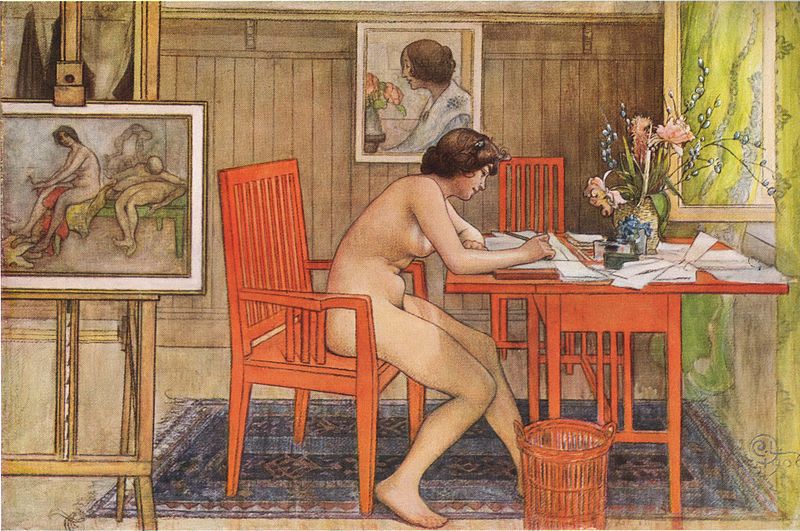
If you’re reading this, I’ll bet there are some books in your house. It doesn’t matter what kind, but I’ll bet there’s more than 20. I don’t have hard data on this, but I was at an event in Indiana a few weeks ago and met a number of PaperGirl readers who were clearly book-owning people. It was a vibe.
If you’re like me, the books you’ve kept for years in your living room or den or office you’ve kept for an obvious reason: They matter. I think the books we keep are meaningful because they reflect to us and everyone else who we are — and/or maybe who we’d like to be. Our bookshelves speak volumes (I know, I know!) because they’re essentially an exhibit we’ve curated. The books on a person’s shelf say, “I’m a hopeless romantic”, or “My political views are central to who I am”, or “I’m a Christian”, or “I’m an atheist”, or “I’m an actor” or “Science fiction helps me deal with reality.” What do your books say about you? Maybe there are so many books on your bookshelves, they’re groaning under the weight of all that paper. In that case, what your books say is: “I can’t throw books out.” That’s your answer: You’re a person who can’t bear to let go of books.
The books on my shelves cover a lot of ground. I’ve got anthologies of humor writing wedged in next to a pristine set of Quiltfolk magazines, the ones I refuse to mark up, make notes in, or review incessantly so that the next issue will be better than the last. On the other shelf, I’ve got everything Camille Paglia has ever published. Next to all that is (for example) a collection of Saul Bellow letters and two or three Nabokov novels … which butt up against a tiny portion of my quilt history library. (The rest is in my basement storage unit at the moment.) To an outside observer, this quilt history/cultural fireband/chuckle fest/Lolita mix is super weird, but to anyone who knows me, the books on my shelves makes perfect sense: My library, myself. And it’s the same with you.
However mishmashed the subcategories may be, there is one prevailing genre within my shelves: Nearly everything fits into the genre of personal narrative. Personal narrative is nonfiction that comprises memoir, autobiography, diary, personal essay, and certain longform journalism. As a writer and reader, this stuff is my jam. It’s been this way since I was in high school. I don’t check novels out from the library, I don’t buy them, and I don’t read the few I still have in my possession. Why?
The way I figure, it’s unfettered reality I want — the “straight tea”, as the kids say. I’m curious about people’s direct experience being a human and if a person writes about that experience as honestly and thoughtfully as they can, I want to read that. In fact, I’m desperate to read it. Everyone has way, way more to learn than they think they do, and I know I’ll learn from people if I can access their respective alternate realities. Of course I realize that novels offer alternate realities, too, and that novels can weave reality in a lovely, different way, but I don’t want a surrogate. I don’t want a (however well-wrought) fabrication standing in between me and the story. I’m too impatient, as usual, but I’m also unapologetic about this: I want my reality uncut. Mainline me.
There are giants of the personal narrative genre. These people are my heroes. Those giants include James Baldwin, Virginia Woolf, Susan Sontag, Michel de Montaigne, Zadie Smith, Christopher Hitchens, David Foster Wallace … and Vivian Gornick.
It’s that last name we’re going to spend the rest of our time with, because Vivian Gornick wrote a book I have kept on my shelf for many years and I shall always keep it on my shelf. It’s like an old, worn, freshly washed bathrobe. The other day, needing one of those, I pulled that book down and leafed through, for old times’ sake. The content I found did two things: 1) it caused me to think about the books we keep on our shelves and 2) it broke open why I can’t get a grip on this blinkin’ blog.
First things first: Vivian Gornick is a genius at writing. Her writing is efficient and elegant — think Einstein’s theory of relativity. Her sentences have zero fat. There is no ego, no flourish. She doesn’t stand for that crap. She observes everything and then she writes down the truth of it, however mundane. She writes books and essays and critical reviews and they will inspire you and also depress you if you’re a writer, because guess what? There’s only one Gornick, baby. If you want a place to start, read her memoir about her relationship with her mother, Fierce Attachments.
Okay, okay, so Gornick wrote a book a few years ago called The Situation and The Story: The Art of Personal Narrative. When I was teaching writing at the University of Chicago, I used this book a lot, especially in the blogging class and the storytelling class. The book is one big revelation, but perhaps the biggest, baddest one is essentially this: to write about your life, you have to craft a persona, because a persona will give you the voice you need to write the story of your life. Here’s an excerpt from the book, and I know I’m just diving in here, but I looked hard for the right passage so I hope you’ll track with me on this:
“The writing we call personal narrative is written by people who, in essence, are imagining only themselves in relation to the subject in hand. … Out of the raw material of a writer’s own undisguised being a narrator is fashioned whose existence on the page is integral to the tale being told. This narrator becomes a persona. Its tone of voice, its angle of vision, the rhythm of its sentences, what it selects to observe and what to ignore are chosen to serve the subject; yet at the same time the way the narrator — or the persona — sees things is, to the largest degree, the thing being seen.
To fashion a persona out of one’s own undisguised self is no easy thing … Yet the creation of such a persona is vital in an essay or a memoir. It is the instrument of illumination. Without it there is neither subject or story. To achieve it, the writer of memoir or essay undergoes an apprenticeship as soul-searching as any undergone by a novelist or poet: the twin struggle to know not only why one is speaking, but who is speaking.”
This blog has existed since 2005. For more than a decade, save for a few periods when I’ve gone dark — as I’ve been lately — I’ve shared my life here and I have told you the truth. I am vulnerable here. I don’t bullshit you. I respect you, I respect myself, and I tell the truth and because of that respect, I cannot write things that are fake. The times when the blog has evaporated for a spell, it’s evaporated precisely because I refuse to be inauthentic, and sometimes it’s impossible to be authentic without turfing out. Put another way: If what’s going on with me is deeply private, if it is not for public consumption, yet, if it would compromise other people, if it simply makes no discernible sense yet, or if I’m just plain too scared to tell you, I don’t know how to write PaperGirl.
PaperGirl is fun. Yes, she’s vulnerable and open. We know that. I talk about sad stuff and bad stuff and gross stuff. But she bounces back. She’s a total dork, a complete spaz. She has perspective and she knows who she is. I love PaperGirl. She’s definitely real. She’s me. She’s a part of me, anyway, which means PaperGirl is … a persona. Absolutely authentic, no fake-out, no bullshit. But a specific voice from me who can take “the raw material of [her] own undisguised being” and tell you about it using a specific “tone of voice”, “angle of vision”, and with a certain rhythm to her sentences. I don’t want to get too writer-rabbit-hole-y on you — too late — but believe me: For years and years, when it was time to sit down and write PaperGirl, I mentally and involuntarily slipped on my PaperGirl shoes, cracked my knuckles, and voila: I could write about my life.
I’m afraid that persona has left the building.
Wait, wait! I don’t mean that in some dour, gloomy way. It’s weird and yes, it is sort of sad: I liked her. I liked that goofy, chummy, weird, sensitive, earnest PaperGirl. I hung out with her a long time, and so did you, and I love you very much, and she loved you very much. But after everything that happened this past winter and everything that has happened since, I can’t get those shoes on my feets. They do not fit. I observe things constantly that I want to tell you about, every single day, but I can’t get it on the page/screen. For awhile, every time I saw something I would normally zip out to you, I’d think, “Yes. That’s it. Tonight I can blog. Yes, I have to write about that, I have to share that. I love that and they’ll love that.” But that night, I’d try to put the shoes on and … I couldn’t write in that PaperGirl voice anymore and that was hard, but even harder was that I didn’t know what voice would take its place. Or if one would. That is a very scary thing for a writer and for a person.
The good news is simply that I’ve figured all this out, and I send my regards to Vivian Gornick. And because I’ve figured it out — that it’s impossible for me to blog like I used to because I’ve outgrown the PaperGirl persona/narrator — this means I can let myself off the hook. I’m not a bad blogger, I’ve just got a concussion. I’ll always write about my life; I just have to figure out who’s doing the writing.
In conclusion: If I let myself off the hook for not being “PaperGirl”, I think I can blog. I think so. There’s an opening. Thank you for all the emails and the comments and everything. You people are amazing. I’m doing pretty good and oh man do I have so much to tell you, big things and little things. I’m bursting to tell you, but I just don’t know what the PaperGirl 2.0 voice is, yet. I’ll get her. I’ll catch her. I get back on my feet. I’ll practice.
This is me, practicing.
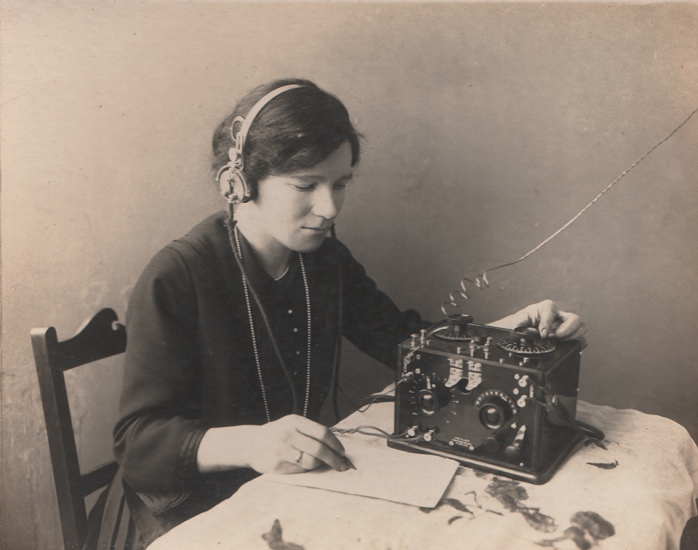
When you live in a big city, it’s possible to witness significant cultural shifts happen in real time.
You have a healthy sample size, for one thing. There are a lot of people to observe. And cities — not always, but most of the time — birth Next Big Things or adopt them early. So if you walk down the street in a big city and notice that lots and lots of people are engaging with a particular thing at the same time, or talking about the same thing, that thing is probably going to have a broader impact before very long.
Which brings us to wireless headphones. Specifically, the Apple AirPods. EarPods? iBuds. I realize that my inability to get the name of those damn things right makes me 1,000 years old, and calling them “those damn things” isn’t helping.
You’ve seen those damn things, right? Many of you may own a pair. If you don’t know what I’m talking about, the next time you’re out someplace being 1,000 old* look for people walking around with white plastic sticks in their ears. Since humans are not (yet) made of bright white plastic, people using these newfangled headphones will hard to miss. Look for people who can’t hear you when you ask them a question because they have thin white sticks coming out of both ears that hang down past their earlobe. These people are wearing wireless headphones, i.e., headphones that connect to their phone without a cord that attaches the two. I don’t know how it works, but it does work.
More than a year ago, when Apple first released those damn things, a friend at the school newspaper immediately purchased a pair. He sashayed into the office wearing them and announced that his life had changed forever, that he was a new man with these wireless headphones. He looked strange to the rest of us, those bright white tubes hanging off both sides of his head. I thought he resembled a tagged deer. Nevertheless, he swore by them. We all nodded and went back to work.
Some months later, I saw more of these deer walking around. I don’t begrudge anyone their thing; we should all do our thing. But I must confess to feeling the tiniest bit smug when I’d pass someone wearing the white sticks. “Ha!” I’d think to myself, “You fell for it! Apple puts out a new product and you line up. New iPhone. Apple Watch. Filth! Stand up for yourself! Resist the tyranny of Apple!” I thought the deer were suckers, frankly, and conspicuous ones, too, which is the worst sort of sucker to be. I’m a sucker for lots of stuff, but it doesn’t show up on my ears.
Then everything flipped.
Just like in autumn when you look around one and realize all the leaves changed overnight; just like in spring when all of a sudden everything is green and flowers are having a lot of sex with each other (that’s how come there’s flowers, people, let’s face it), so it was with these wireless headphones. Suddenly, everyone was wearing them. Not everyone everyone, but many. Instead of seeing one tagged deer for every 300 people I’d pass while walking up Michigan Avenue, there were one or two in every 50 people, maybe more. I don’t have to count to see what’s happening: Wireless headphones are now The Thing. They are not a trend; they represent a major shift. You’re either tagged now or you’ll be tagged later. Now when I walk up or down the street, the people who stand out are the sad sacks with headphone cords. The plebes! Sad!
I got a pair of the damn things as a gift. I was most grateful for the gift, but to me, the accessory was just okay. It was cool to put the phone at one end of my apartment while I was on a work call and slowly walk away from it without having to shout. And I very much liked not having to untangle my headphone cord every time I took it out of my purse. As for wearing the wireless headphones in public, I felt very with it. I felt very tech savvy. I felt very au courant.
Well, I hate feeling all of those things. I don’t want to be a tagged deer! Trying to stay on top of the times is a tricky proposition: A gal must allow herself to be carried at least some distance on the winds of change; living under a rock is lonely and dark and then you’re living under a rock, so that’s not going to be very comfortable. But to pay too much attention to whatever culture is demanding of you this week is to be used up real quick by forces you can’t control. That’s not very comfortable, either.
Better to watch and wait a little while and see what sticks — or sticks out. Incidentally, I managed to lose my headphones in an Uber in New Orleans. I am 95 percent sure this was an accident.
*call me

So the new apartment is great. Like, great.
It’ll take months to get rid of all the dust. The linoleum in the kitchen is from the Pleistocene era. The paint is an inch thick in every room and is cracking so deep in certain places it looks like Chicago must have experienced a small earthquake at some point in the 1970s. I’ll remedy these things eventually; until then, I love my new home too much to care.
And, um, I live next door to a famous actress.
It’s so exciting! I’ve never lived next to a famous actress before. I couldn’t wait to tell you, but there’s good and bad news.
Bad news first: I can’t tell you the actress’s name. Peeps, I just can’t. It would be extremely uncool to move into this neighborhood and, in my public fan-girling of this epic, brilliant, hilariously funny, iconic actress, effectively share her address with the internet. Believe me, I desperately want to tell you. I wondered if I could just give you obvious hints so you could figure it out yourself, but then you’d guess right and her name would be all over the comments — which gives us the same problem. Any cluster or burst of internet activity about Famous Actress is going to alert Famous Actress’s team. They’ll check it out and see that there was all this chatter about her on some quilter-person’s blog and oh! Guess what, Famous Actress? Your neighbor is a creepy quilter-person and she telling a whole bunch of other creepy quilter-people where you live!
Sub-optimal.
The good news is that this actress is every bit as cool and awesome in real life as you want her to be. That has to be enough for now. Mind you, I haven’t talked to her, but my third-floor bedroom window looks out over the gorgeous courtyard patio at the back of her house and I have obtained data by peering through the trees and catching glimpses of her here and there. The data I have gathered proves her awesomeness and no, peering through the trees to spy on people is not creepy at all. Here are a few of my observations of Famous Actress:
I promise you I will try to meet this woman for real and become her best friend. Once we become best friends, then I can ask her if I can blog about her and she’ll say yes, of course, Mary, you can do anything you please because I love you so much and you’re such a good writer and and please write a movie for me to star in and please come over for breakfast lunch and dinner we’re all gathering in the courtyard patio and don’t you even think about bringing anything you silly girl but oh take this jacket I wore in that movie from the 1980s that you know by heart and also please take all of my old diamonds.
It’s good to be home.
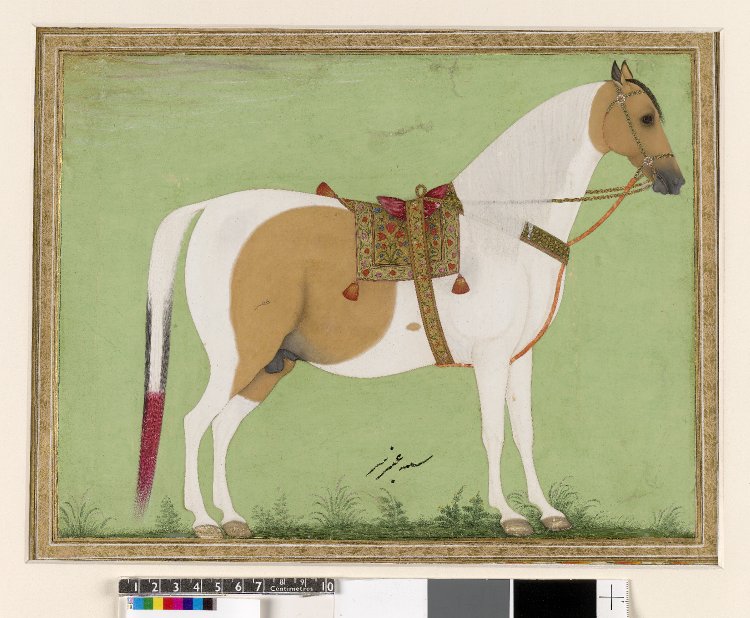
Hey, horse. Nice saddle. I used to sit up there. Oh, this n’ that. I had to go sleep in a barn for awhile. Could I get back on you? Like, in the saddle? Thanks. Yeah, this feels good.
H’yah!
* * *
What makes a piece of writing a work of literature? Have you ever thought about that? (I’m speaking to you, now, not the horse, but she’s still here.)
What makes an essay, or a novel, or a memoir — even a blog post — more than just words on a page? Even if they’re really good words on a page? I’ve been wanting a solid answer to this question for years. When trying to differentiate between a “literary” work or a non-“literary” work, folks sorta cock their heads and offer something vague and impossible to prove, like, “Um … Well, literature is just generally better than other writing? I guess? It’s got something to do with being good.”
That isn’t enough for me. But to be fair, let’s look at a situation where you’ve got writing that’s obviously “better” than other writing to see if it’s a passable definition.
Consider James Baldwin. Consider basically anything he ever wrote. Here you have a writer of staggering talent, a man who spent his entire life toiling endlessly at his desk to make good sentences, a man whose grocery list would surely make us weep for its clarity of conviction. Baldwin once said a writer should write a sentence “as clean as a bone.” James Baldwin’s writing is “better” than 95 percent of all other writing ever produced, ever, so it’s gotta be literature, right? Now, you might not dig his writing, you might be ambivalent. But regardless of whether or not you like James Baldwin, it’s clear from the first sentence of any of his essays or novels or poems that when you read the man’s work, you’re reading literature. Another way to look at it is to lay a copy of Baldwin’s The Fire Next Time between an airport crime novel and a plucky beach read. Now point to the literary work.
Exactly.
Baldwin is obviously the literary writer but why? It’s not length. The beach read could be 500 pages and the Baldwin text just an excerpt; nothing changes. Does a literary work contain fancy words? Is that what makes it literary? Ugh, let’s hope not. As complex as his ideas are, Baldwin’s language isn’t florid or showy — one of the many reasons he’s so great. Is a work literary because it contains Deep Thoughts? Profound Themes? That’s not fair. A good trade paperback by a popular author can deal with topics like death, aging, or heartbreak, too, but that doesn’t make it literature. The criteria for distinguishing between literature and not-literature has always felt as elitist as it is subjective. Other people may have a crystal clear understanding of the difference, but not this nerd.
Then, just when I was not looking for it, the answer appeared. I found it in an article in Harper’s magazine a couple issues back. The article was entitled Like This or Die: The fate of the book review in the age of the algorithm and was written by Christian Lorentzen. Check this out:
“Literary writing is any writing that rewards critical attention. It’s writing that you want to read and to read about. It’s something different from entertainment. It involves aesthetic and political judgments and it’s not easily quantifiable.”
I was sitting in my black chair and had to set down my tea to pump my arms in the air and whoop. That was it! Yes! Literary writing is writing you can go to battle with! Literature gives as good as it gets! It’s not about long words or length; it’s about substance and resilience — and craft is kind of de facto at that point. Literature is a steak. Not-literature is a smoothie and hey: Maybe it’s a very good smoothie. There’s nothing wrong with a smoothie! Smoothies are a nice break from steak. But make no mistake: You can’t make literature in a blender and add wheat germ for texture. If you want to read — or write — literature, you’re gonna have to chew.
What does all this have to do with that horse?
Oh, I don’t know. It’s got something to do with how writing is hard. It’s got something to do with expectations I place on myself, probably. The first five months of this year have forced me to form a new relationship with expectations. It’s strange and not entirely comfortable for its newness. I used to either claw my way up to meet expectations or cry over them when they were dashed. I’m not even sure what they are these days.
PaperGirl is not literature. Never has been, never will be. Believe me, it’s a relief. If I had to figure out how cook and eat a steak sitting atop a horse, I’d fall off and never get back on. I’m good with my smoothie. I’ve even got a cup-holder.